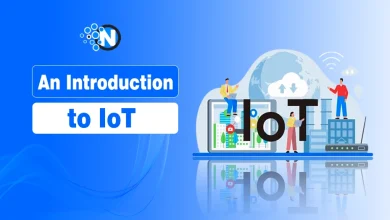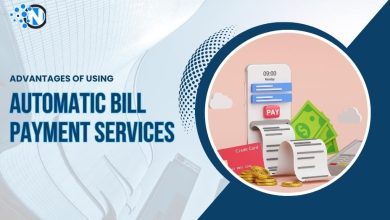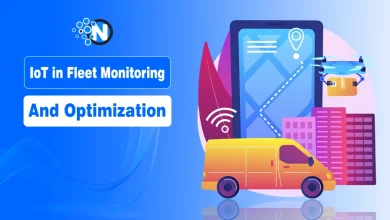Building IoT Apps For Smart Agriculture in 2025
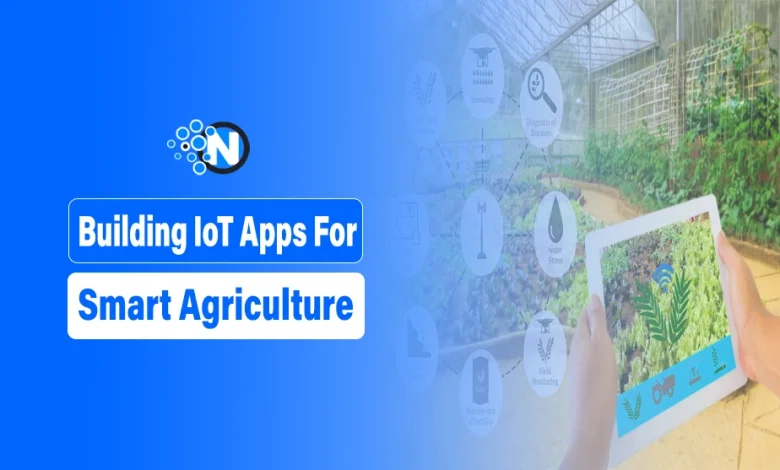
Smart agriculture is transforming farming with IoT technology. You can imagine fields that monitor themselves and analyze their requirements and growth potential. There are various advanced crops that signal needs, and farmers who optimize yields effortlessly.
IoT apps are making all of this a reality. You can connect devices for smarter decisions that will help you to analyze and take quick actions as required. There is a huge community that is still unaware of this advanced technology, especially farmers.
In this blog post, I will discuss building IOT apps for smart agriculture in this modern age.
The Role of IoT in Modern Agriculture
IoT is abbreviated as “Internet of Things”. The installation of these apps for your daily life routine management makes every task efficient. It connects devices to collect and share data. In this modern-day agriculture, it transforms conventional farming techniques through multiple integrations with advanced technology.
According to Statista, the market value of smart agriculture is expected to grow from 15 billion U.S. dollars in 2022 to 33 billion U.S. dollars by 2027.
Let me give you an example, such as there are sensors that monitor soil, weather, and crops in real time.
Farmers gain insights instantly. IoT automates tasks like irrigation and pest control. It reduces manual work significantly. Additionally, it enables precision farming for better yields.
Integrating smart devices enhances decision-making for proper management. Consequently, farms become more efficient and sustainable.
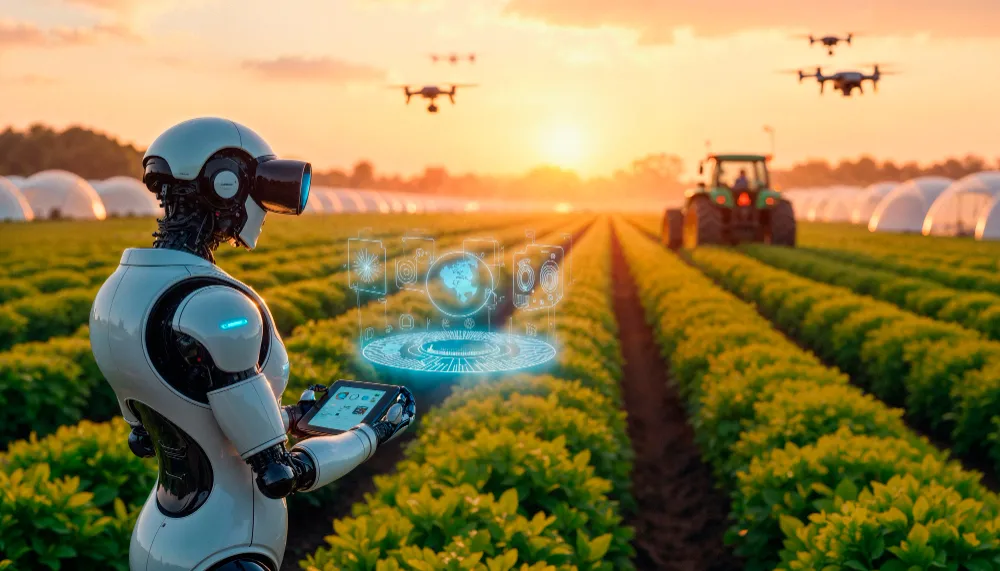
Key Benefits of IoT Apps in Agriculture
There are a lot of benefits of the utilization of IoT apps in agriculture. But here are some of the key advantages that you definitely achieve by its integration with the farming techniques and devices.
- Precision Monitoring: It improves crop yields through precise monitoring of field conditions, such as the requirements of fertilizers or anything that can be monitored.
- Soil Sensors: Integrated sensors track soil moisture and nutrients for optimized and proper growth.
- Resource Efficiency: IoT software saves resources by automating farm operations.
- Automated Irrigation: Automated irrigation reduces water waste with targeted delivery.
- Labor Savings: It reduces labor costs by automating farm tasks.
- Task Automation: Machines handle repetitive tasks efficiently. It boosts productivity.
- Data Protection: Real-time data prevents crop losses with immediate insights.
- Pest Alerts: Pest alerts enable quick action to protect crops.
- Sustainable Practices: These apps promote sustainability through efficient resource use.
- Eco-Friendly Farming: Farmers use fewer chemicals, protecting the environment.
To develop effective IoT apps, companies offering IoT app development solutions provide custom platforms that integrate seamlessly with agricultural systems. These solutions ensure that farmers can access real-time data and actionable insights without requiring extensive technical expertise.
Core Components of IoT Apps for Smart Agriculture
The key components of IoT apps in smart agriculture are sensors, connectivity, data processing, and analytics. These elements can also integrate with each other to allow remote monitoring, automation, and the use of data to make decisions in farming practices.
Let’s discuss each of them and their roles and performances to have a clear understanding.
Sensors:
The first most important element in an IoT system is sensors. These sensors collect data regarding the environment and crops. The usual sensors capture the temperatures, humidity, soil moisture, light, rain, and even diseases on the plants.
They are also capable of monitoring livestock, their health, and where they are.
Connectivity:
The connectivity component makes sure that the data exchange between sensors, devices, and the cloud is in complete operation. The most common connection technologies are Wi-Fi, Bluetooth, and 5G.
The volume and range of data and power consumption are some of the factors taken into account when deciding on the technology to choose.
Data Processing:
Processing of the data deals with the collection, storage, and analysis of the sensor data. This usually integrates big data analytics and cloud computing.
Patterns and the ability to predict outcomes and direct better decision-making can also be detected. All of this can be further enhanced by the utilization of artificial intelligence (AI) and machine learning algorithms.
Applications/Analytics:
These are the tools that make the farmers communicate with the system, visualize the data, and arrive at the right decisions.
It includes different examples, such as dashboards to monitor the crop health and automatic irrigation modules.
Steps for Building IoT Apps for Agriculture
If you wanna have to develop an IoT app for yourself. There are essential benchmarks you have to cover to have efficient and accurate software for agriculture.
Define Your Objectives
First, you have to identify your objective and the purpose of developing an IoT application. Analyze a specific problem you wanna solve with that.
It includes understanding the user’s desires, and then finalizing the whole required functionality to develop a software.
Choose the Right IoT Platform
Then choose a suitable IoT platform that best to your application functionalities. Prioritize scalability, integration, and data analytics capabilities.
Some of the most popular platforms for this purpose include AWS, Google Cloud IoT, Azure, and many more.
Select the Hardware Components
Narrow down and select the necessary hardware components you require, such as sensors, microcontrollers, etc. After that, you have to make sure that all of the components are compatible enough for your platform.
Develop the Software
Now you have to develop the software that will operate on both IoT devices and cloud platforms. For that, you have to focus on:
- Programming languages such as Python, Java, etc.
- Data processing, which includes modules to organize and analyze data for IoT devices.
- Simple and effective user interface.
Test and Optimize the App
Test your app multiple times to make sure that both hardware and software components are working efficiently. This testing might include performance testing, security features, etc.
And then optimize the application on the basis of the feedback you had from these tests. This will enhance the reliability of the IoT application.
Deploy and Maintain
Once you have done everything, deploy your IoT software to the platform you have chosen. This will include configuring devices, and making sure that all of it is connected properly.
Keep in mind that after all of it, the most necessary thing is its maintenance, on which you can never compromise.
Challenges in IoT App Development for Agriculture
No offense that challenges are affecting the development of IoT apps, even though they have benefits. To begin with, there is connectivity in the countryside, which is complicated.
The weak signals interfere with data flow. There are also very prohibitive costs to small farmers. The cost of sensors and cloud services is high, which negatively affects the user’s finances. The protection of data is essential.
Harmful farm data is at risk of cyberattacks. Not all devices will synchronize. Lastly, training is demanded among the farmers. The problem is that many of them lack technology and information.
The challenges can be addressed through low-cost solutions, improved networks, and user education, ensuring that IoT is adopted.
Real-World Applications of IoT in Agriculture
Agriculture across the world is already changing due to IoT. Let me give you an example: Water-saving irrigation systems are used. There are sensors that measure the problems of soil and sprinklers. And side by side, precision farming also optimizes planting. The health of crops is monitored by drones above them.
Besides, efficiency is enhanced through livestock tracking. IoT tags keep track of animal health and location. In addition, smart greenhouses are climate-controlled.
They change the temperature and humidity. Lastly, the tracking of the supply chains guarantees freshness. Enclosures are monitored by an IoT monitor that generates origination and market data. Such applications enhance productivity and sustainability.
Conclusion
Smart agriculture powered by IoT apps is revolutionizing the farming industry. By integrating advanced sensors, connectivity, and data analytics, IoT technology enables precision farming, resource efficiency, and sustainable practices.
Farmers benefit from real-time monitoring, automated irrigation, pest alerts, and improved crop management. Despite challenges such as connectivity and cost, the adoption of IoT solutions in agriculture leads to increased productivity, profitability, and eco-friendly operations.
Embracing IoT in smart agriculture is essential for efficient and sustainable smart farming.

